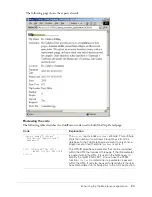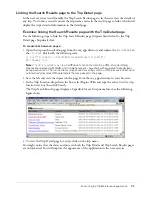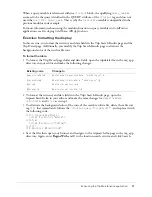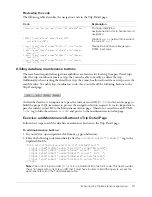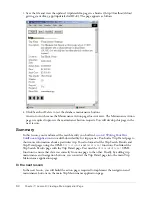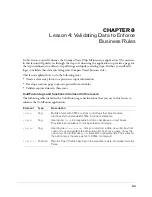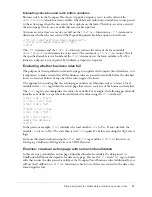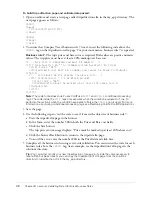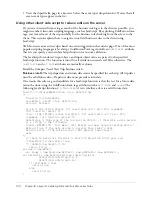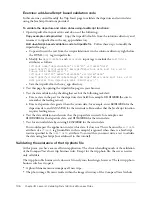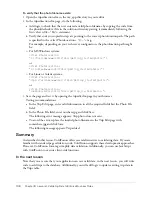
Developing code to validate data and enforce business rules
97
Evaluating check box and radio button variables
Business rule 8 in the Compass Travel new trip policy requires you to test the value of the
depositRequired
check box form variable. Check box and radio button variables are only passed
to the action page when the user selects these options on the form. Therefore, an error occurs if
the action page tries to use a variable that was not been passed.
To insure an error does not occur, you will use the
IsDefined
function
in a
cfif
statement to
determine whether the user selected the Deposit Required check box option on the form:
<cfif not IsDefined("Form.depositRequired")>
<cfset form.depositRequired = "No">
</cfif>
The
cfif
statement and the
IsDefined
function evaluate the value of the form variable
depositRequired
to determine if a value exists. The statement
not
IsDefined
returns True if
the specified variable is not found and the
cfset
statement sets the form variable to No. No
indicates a deposit is not required; Yes indicates a deposit is required.
Evaluating whether business rules fail
The purpose of the tripeditaction.cfm action page is to update the Compass Travel database, so it
is important to make certain that all the business rules are passed successfully before the database
insert is executed. Failure of any one of the rules negates the insert.
One approach to ensuring that the action page considers each business rule is to create a local
variable with a
cfset
tag within the action page that tests to see if any of the business rules failed.
The
cfset
tag lets you manipulate the value of a variable. For example, the following pseudocode
initializes a variable to a specific value and checks the value using the
cfif
statement:
<cfset isOk = "Yes">
if rule 1 fails then
<cfset isOK = "No"
...
if Rule n fails then
<cfset isOk = "No">
...
<cfif isOk = "Yes">
update the database
</cfif>
In the previous example,
cfset
initializes the local variable
isOk
to Yes
.
If any rule fails, the
variable
isOK
is set to No. The code then tests if
isOk
equals Yes, before executing the SQL insert
logic.
For more information about using the
cfset
and
cfif
tags and the
IsDefined
function, see
Developing ColdFusion MX Applications
or
CFML Reference
.
Exercise: create an action page with server-side validation
In this exercise you build an action page (tripeditaction.cfm)to validate the data passed to
ColdFusion MX from the tripedit.cfm data entry page. You use the
cfif
and c
fset
tags to build
edits that ensure the data passed is valid per the Compass Travel business rules. Additionally, you
will use the ColdFusion
IsDefined
function to check to see if data was entered in the data entry
form (tripedit.cfm).
Summary of Contents for COLDFUSION MX 61-GETTING STARTED BUILDING COLDFUSION...
Page 1: ...Getting Started Building ColdFusion MX Applications...
Page 6: ...6 Contents...
Page 10: ......
Page 30: ...30 Chapter 2 CFML Basics...
Page 36: ...36 Chapter 3 Database Fundamentals...
Page 48: ......
Page 76: ...76 Chapter 6 Lesson 2 Writing Your First ColdFusion Application...
Page 134: ...134 Index...

